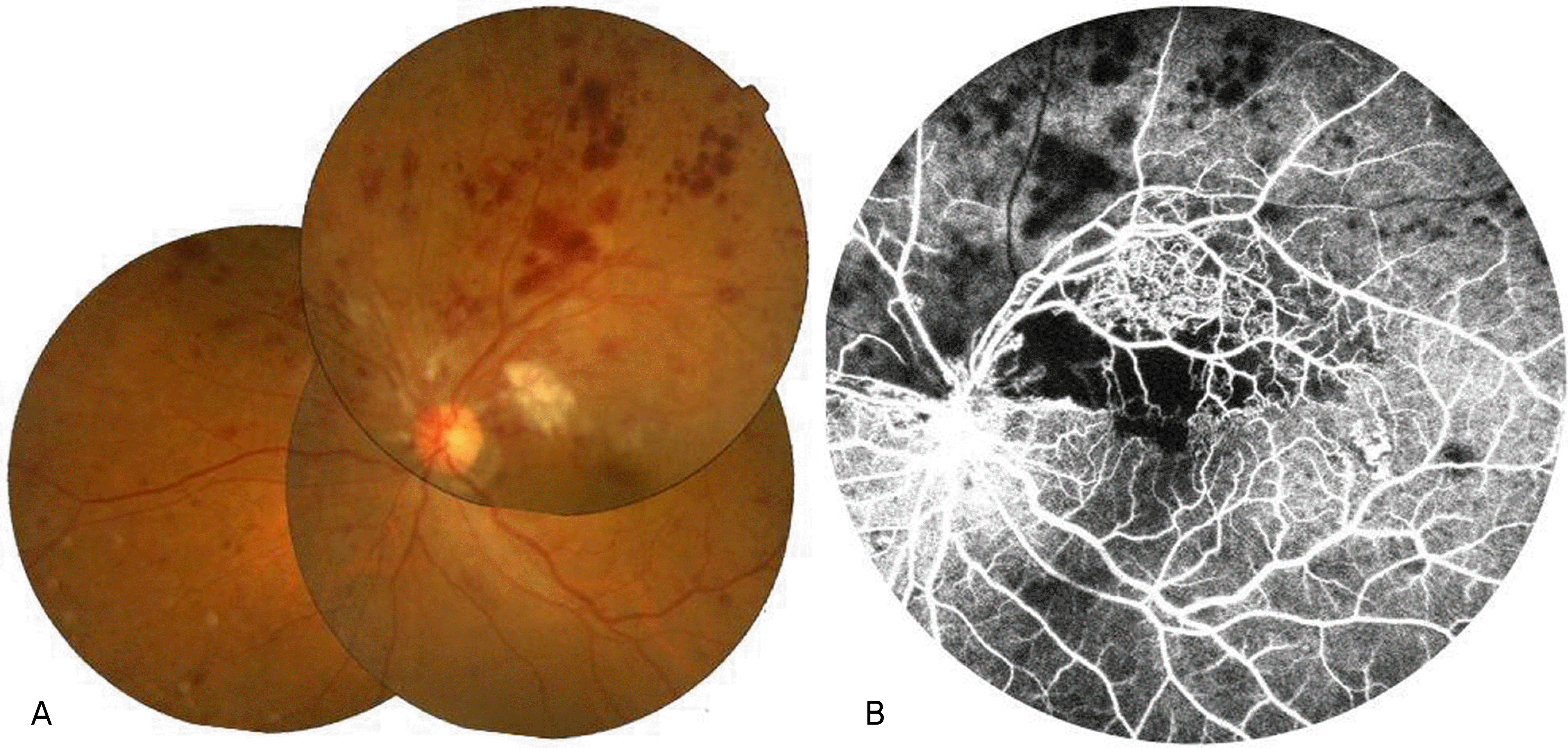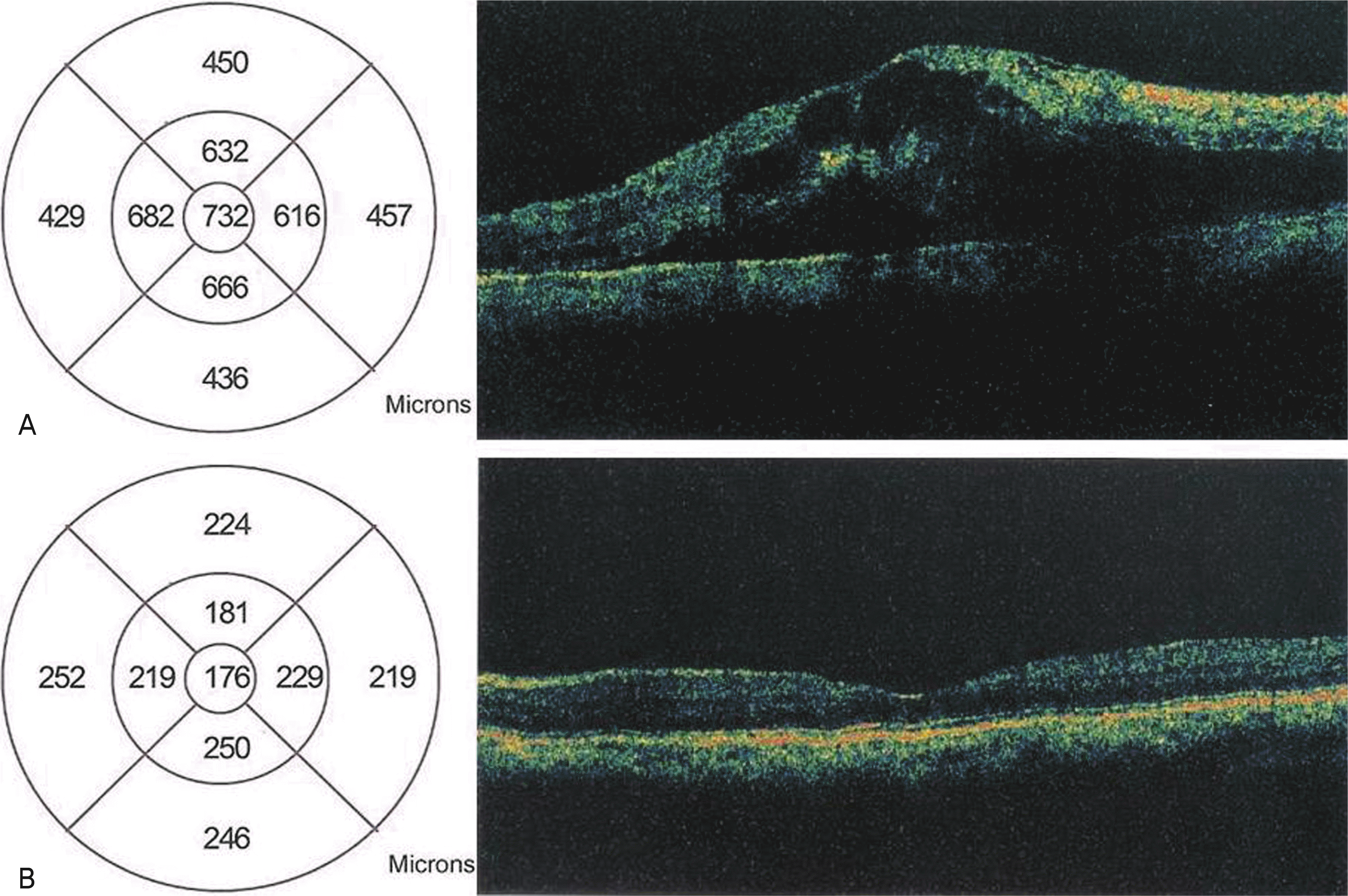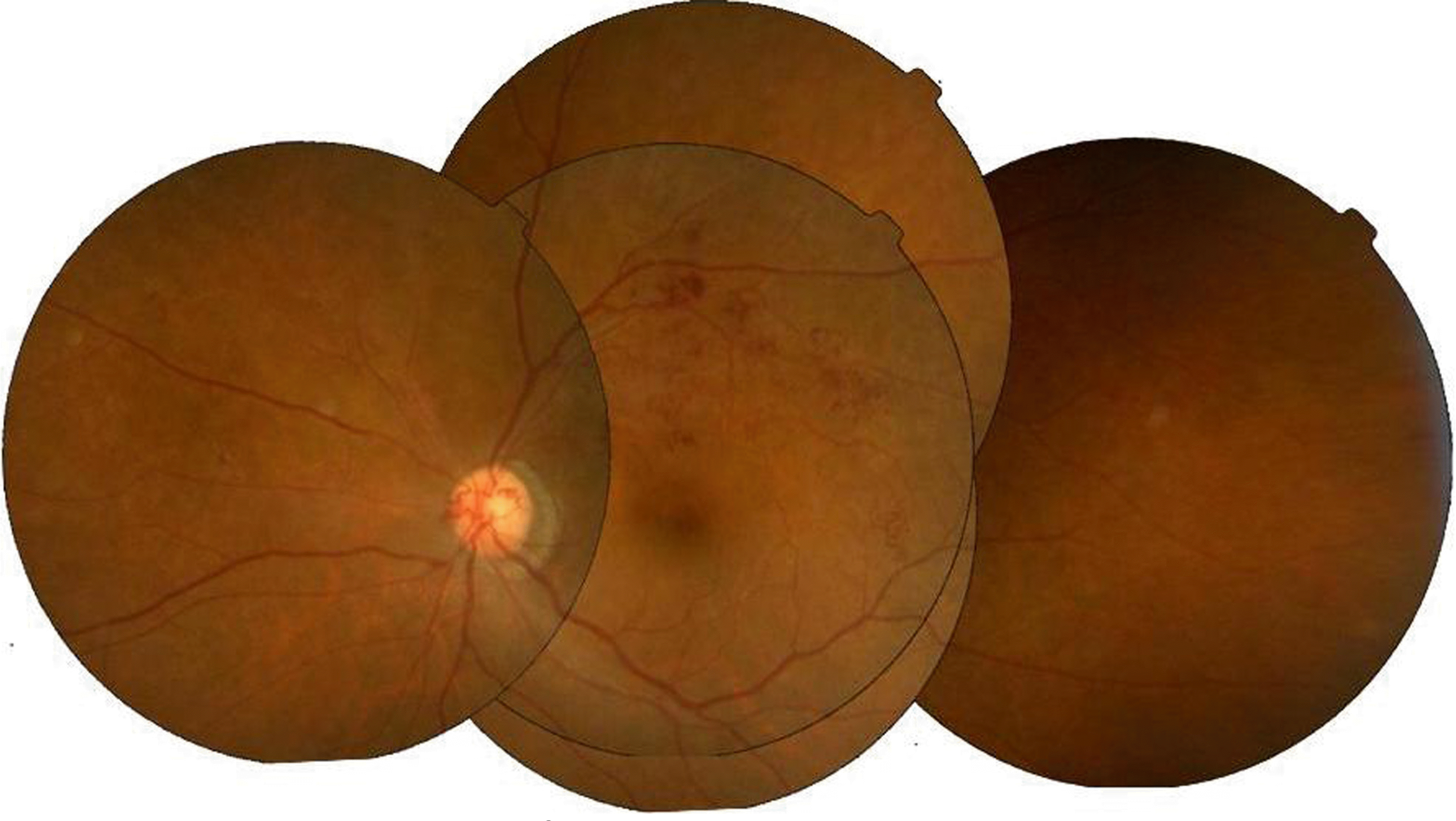Abstract
Purpose
We report on a case of hemi-central retinal vein occlusion (Hemi-CRVO) which occurred in a patient with Type 1 neurofibromatosis.
Case summary:
A 31-year-old woman presented with a chief complaint of a one-month history of decreased visual acuity in the left eye. The patient had Type 1 neurofibromatosis but had no other systemic diseases. The best corrected visual acuity (BCVA) was 0.8 in the right eye and 0.05 in the left eye. Multiple Lisch nodules were present in the irises of both eyes on slit lamp examination. Fundus examination revealed a hemi-central retinal artery occlusion in the left eye. Optical coherence tomograms showed that the central macular thickness was 192 microns in the right eye and 732 microns in the left eye. There was cystoid macular edema in the left eye. A fluorescein angiogram showed delayed filling in the superior branch retinal vein of the left eye. There was an extensive area of non-perfusion of the retinal capillary in the corresponding area, including the perifoveal area. Blood tests for hyper-coagulability, autoimmune disorders, connective tissue disorders and other tests for the brain and carotid artery and coronary artery disease showed no abnormal findings. The clinical course was monitored following an intravitreal injection of bevacizumab (Avastin®). Eight months later, the BCVA had improved to 0.2.
Go to : 
References
2. Huson S, Jones D, Beck L. Ophthalmic manifestations of neurofibromatosis. Br J Ophthalmol. 1987; 71:235–8.

3. Bosch MM, Boltshauser E, Harpes P, Landau K. Ophthalmologic findings and long-term course in patients with neurofibromatosis type 2. Am J Ophthalmol. 2006; 141:1068–77.

4. Mitchell P, Smith W, Chang A. Prevalence and associations of retinal vein occlusion in Australia. The Blue Mountains Eye Study. Arch Ophthalmol. 1996; 114:1243–7.
5. Klein R, Klein BE, Moss SE, Meuer SM. The epidemiology of retinal vein occlusion: the Beaver Dam Eye Study. Trans Am Ophthalmol Soc. 2000; 98:133–41.
6. Gutman FA. Evaluation of a patient with central retinal vein occlusion. Ophthalmology. 1983; 90:481–3.

8. Duke-Elder S. System of Ophthalmology: Diease of the retina. Vol. 10. London: Henly Kkimpton;1974. p. 736.
9. Destro M, D'Amico DJ, Gragoudas ES, et al. Retinal manifestations of neurofibromatosis. Arch Ophthalmol. 1991; 109:662–6.

10. Cunliffe IA, Moffat DA, Hardy DG, Moore AT. Bilateral optic nerve sheath meningiomas in a patient with neurofibromatosis type 2. Br J Ophthalmol. 1992; 76:310–2.

11. Neurofibromatosis. Conference statement. National Institutes of Health Consensus Development Conference. Arch Neurol. 1988; 45:575–8.
12. Lewis RA, Riccardi VM. Von Recklinghausen neurofibromatosis. Incidence of iris hamartomata. Ophthalmology. 1981; 88:348–54.
13. Kaiser-Kupfer MI, Freidlin V, Datiles MB, et al. The association of Posterior Capsular Lens Opacities with Bilateral Acoustic Neurofibromatosis Type 2. Arch Ophthalmol. 1989; 107:541–4.
14. Bang J, Yang HS, Ahn JH, et al. Ophthalmic manifestations in patients with neurofibromatosis. J Korean Ophthalmol Soc. 2008; 49:1829–38.

15. Kaye LD, Rothner AD, Beauchamp GR, et al. Ocular findings associated with neurofibromatosis type II. Ophthalmology. 1992; 99:1424–9.

17. Moadel K, Yannuzzi LA, Ho AC, Ursekar A. Retinal vascular occlusive disease in a child with neurofibromatosis. Arch Ophthalmol. 1994; 112:1021–3.

18. Thölen AM, Messmer EP, Landau K. Peripheral retinal vascular occlusive disorder in a young patient with neurofibromatosis 1. Retina. 1998; 18:184–6.

Go to : 
 | Figure 1.Anterior segment photograph shows multiple Lisch nodules on the iris. (A. right eye: B. left eye) |
 | Figure 2.(A) Fundus photograph demonstrating features of intraretinal hemorrhage, cotton wool spot and macular thickening of the left fundus. (B) The venous phase fluorescein angiogram demonstrating intraretinal hemorrhage and capillary nonperfusion in the superior two quadrants, including the parafoveal region. |
 | Figure 3.A. Optical coherence tomography demonstrating prominent retinal thickening in the macular region with retinal cysts and subretinal fluid accumulation. B. 8-month post injection of the Avastin® demonstrating dramatic resolution of retinal thickening and return of normal foveal contour. |




 PDF
PDF ePub
ePub Citation
Citation Print
Print



 XML Download
XML Download